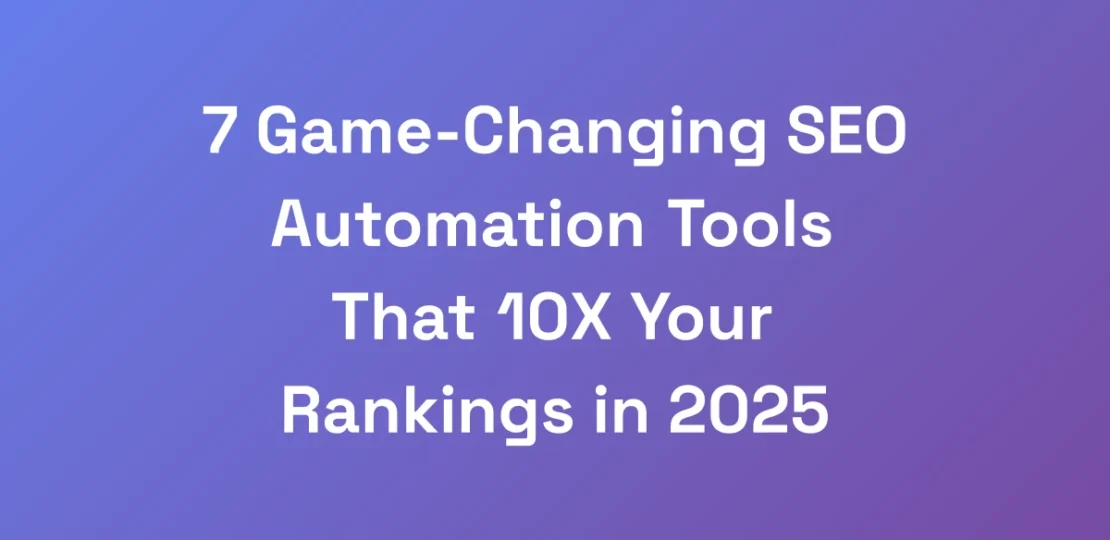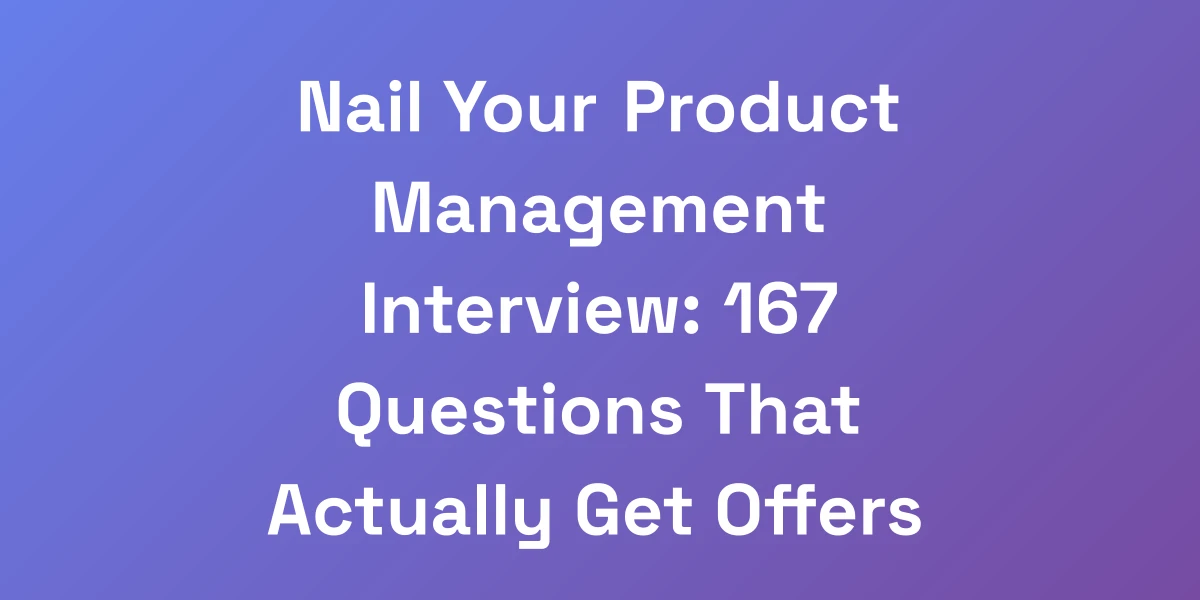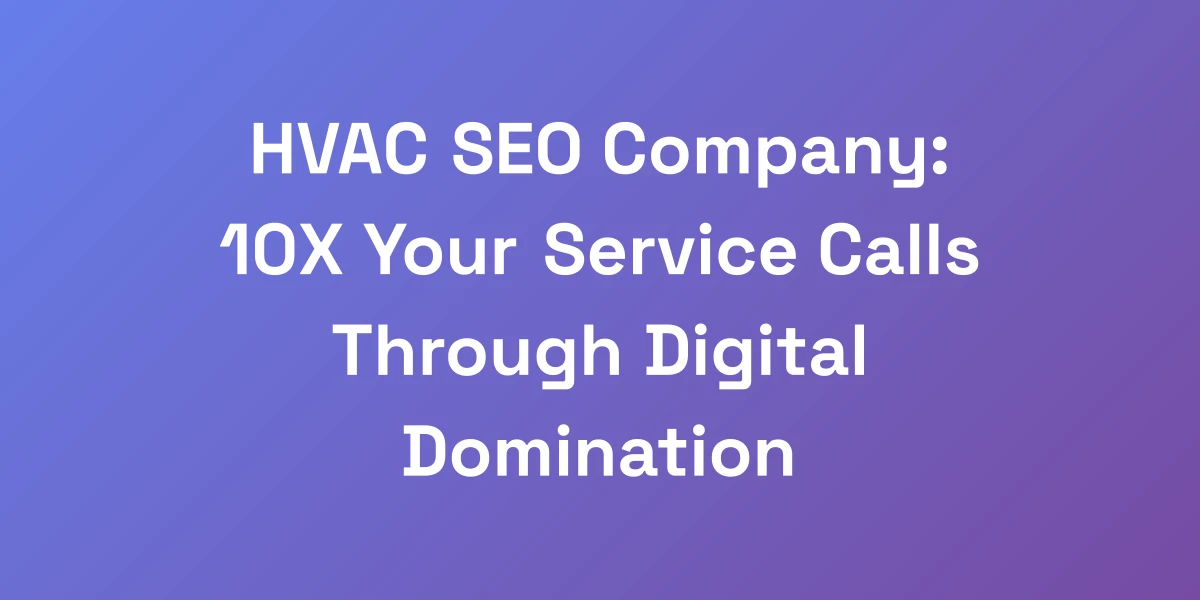7 Game-Changing SEO Automation Tools That 10X Your Rankings in 2025
March 25, 2025 | by [email protected]

Introduction
We’ve all been there—spending countless hours on tasks that should be automated. If you’re still manually checking rankings, building backlinks one by one, or optimizing content the old-fashioned way, you’re not just busy—you’re inefficient.
SEO automation tools are not just a luxury; they’re a necessity in 2025. Imagine slashing your workload by 80%, freeing up time to focus on strategy and growth. We’ve seen firsthand how these tools can transform efforts, scaling businesses from six to seven figures with precision and speed.
But why are most SEO professionals stuck in the past, grinding away at tasks that AI and automation could handle in minutes? It’s time to break free from the manual grind and embrace the future of SEO. Ready to dominate your market with less effort? Let’s dive into the seven game-changing tools that will revolutionize your SEO strategy.
Why Most SEO Professionals Are Wasting 80% of Their Time (And How Automation Fixes This)
The Hidden Cost of Manual SEO Work
Manual SEO tasks may seem manageable, but they come with hidden costs. Time is money, and every hour spent on repetitive tasks is an hour not spent on strategic growth.
Consider the time it takes to conduct keyword research manually. Hours of data collection and analysis add up, leaving little time for creating impactful content or optimizing user experience. Moreover, manual work increases the risk of human error, leading to inconsistent results and wasted efforts.
Businesses often underestimate these hidden costs, focusing on short-term gains rather than long-term efficiency. This oversight can stunt growth and prevent professionals from fully leveraging their potential.
The Automation Revolution in SEO
Enter the automation revolution. SEO automation tools are designed to handle repetitive tasks effortlessly, allowing professionals to shift their focus to what truly matters—strategy and creativity.
These tools leverage AI and machine learning to streamline processes, from keyword research to content optimization and backlink building. The result? Enhanced efficiency, consistent quality, and the ability to scale operations without the proportional increase in workload.
We’re living in an era where technology empowers us to achieve more with less. Embracing SEO automation is not just an option; it’s a strategic imperative for anyone serious about dominating their niche.
Key SEO Tasks You Must Automate Today
Not all SEO tasks are created equal. Some are ripe for automation, while others still require a human touch. Here are the key SEO tasks you should automate immediately:
- Keyword Research: Automate the process of discovering high-value keywords to ensure your content targets the right terms.
- Content Optimization: Use tools that analyze and optimize your content for readability, keyword density, and SEO best practices.
- Rank Tracking: Continuously monitor your rankings without manual checks, staying updated with real-time data.
- Backlink Building: Automate the acquisition and monitoring of backlinks to maintain a healthy link profile.
- Technical SEO Audits: Regular automated audits can identify and fix technical issues that affect your site’s performance.
The ROI of Implementing SEO Automation
The return on investment (ROI) for SEO automation is substantial. By reducing the time spent on manual tasks, businesses can allocate resources to higher-impact areas like strategy, content creation, and customer engagement. Additionally, partnering with an elite B2B SEO company can further enhance strategic growth.
For instance, one study found that 17% of users saved over 10 hours per week with AI-driven SEO automation, while 39% saved between 1-5 hours. These time savings translate directly into increased productivity and revenue growth.
Moreover, automation enhances accuracy and consistency, reducing errors and improving the overall quality of SEO efforts. This leads to better rankings, increased traffic, and ultimately, higher profits.
Common Automation Mistakes to Avoid
While automation can revolutionize your SEO strategy, it’s not without its pitfalls. Here are common mistakes to watch out for:
- Overreliance on Automation: Automation should complement, not replace, human expertise. Balance automated processes with strategic oversight.
- Poor Integration: Ensure your automation tools integrate seamlessly with your existing systems to avoid data silos and workflow disruptions.
- Ignoring Search Intent: Automation tools can’t fully understand user intent. Always review and optimize content to align with what users are genuinely searching for.
- Lack of Customization: One-size-fits-all approaches rarely work. Customize your automation settings to match your unique business needs and goals.
- Neglecting Quality Control: Regularly audit automated processes to ensure they are functioning correctly and delivering the desired results.
The Ultimate Stack of best SEO automation tools That Actually Work
Content Optimization Powerhouses
Content is king, but optimizing it for SEO can be time-consuming. Tools like Surfer SEO and Clearscope analyze your content and provide actionable recommendations to improve its SEO performance.
For example, Surfer SEO evaluates your content against top-ranking pages, suggesting keyword usage, structure, and readability enhancements. This ensures your content is not only optimized for search engines but also engaging for readers.
Similarly, Clearscope uses natural language processing to identify relevant keywords and phrases, helping you create content that resonates with both search engines and your audience.
Technical SEO Automation Tools
Technical SEO is the backbone of your website’s performance. Tools like Ahrefs and SEMrush offer comprehensive site audit features that automatically identify and fix technical issues.
Ahrefs provides in-depth site audits, highlighting issues like broken links, duplicate content, and slow page speeds. By automating these audits, you can ensure your website remains in top shape without manual checks.
SEMrush goes a step further with advanced features like schema optimization and site structure analysis. These tools not only detect problems but also offer solutions to enhance your site’s technical SEO.
Rank Tracking and Analytics Automation
Keeping track of your rankings is crucial, but manually monitoring them is inefficient. Google Analytics and Serpstat automate rank tracking, providing real-time insights into your performance.
Google Analytics integrates seamlessly with your SEO tools, offering detailed reports on traffic, user behavior, and conversion rates. This data helps you understand what’s working and where improvements are needed.
Serpstat offers robust rank tracking features, allowing you to monitor your keyword positions across different regions and devices. Automated alerts keep you informed of significant changes, enabling quick strategic adjustments.
Link Building Automation Solutions
Backlinks are vital for SEO, but building them manually can be exhausting. BuzzStream and LinkAssistant simplify link building by automating outreach and relationship management.
BuzzStream streamlines the process of finding and contacting potential link partners. It manages your outreach campaigns, tracks communication, and maintains your link building database, ensuring you never miss an opportunity.
LinkAssistant offers similar automation features, focusing on identifying high-quality backlink opportunities and automating the outreach process. These tools save you time and improve the efficiency of your link building efforts.
AI-Powered Content Generation Tools
Creating high-quality content consistently can be challenging. Tools like Writesonic and Jarvis (now Jasper) leverage AI to generate SEO-friendly content effortlessly.
Writesonic uses advanced AI to create engaging articles, blog posts, and marketing copy. It ensures your content is optimized for keywords, readability, and user intent, making it a valuable asset for any SEO strategy.
Jasper (formerly Jarvis) specializes in generating creative and optimized content quickly. Whether you need product descriptions, blog posts, or social media content, Jasper delivers high-quality output tailored to your needs.
Reporting and Dashboard Automation
Keeping track of all your SEO efforts can be overwhelming. Tools like Google Data Studio and Tableau automate reporting and dashboard creation, providing you with clear, actionable insights.
Google Data Studio integrates with your SEO tools to create comprehensive dashboards that display key metrics in an easy-to-understand format. Automated reports ensure you stay informed without the manual hassle.
Tableau offers advanced data visualization features, allowing you to create customized reports that highlight your SEO performance. These dashboards help you make data-driven decisions and track your progress over time.
Setting Up Your SEO Automation System for Maximum Impact
Creating Your Automation Workflow
Building an effective SEO automation system starts with a well-designed workflow. Identify the tasks that can be automated and map out the processes to ensure seamless integration.
Start by categorizing your SEO tasks—keyword research, content optimization, link building, and technical audits. Then, assign automation tools to each category, ensuring they work together harmoniously.
For example, use Surfer SEO for content optimization, Ahrefs for technical audits, and BuzzStream for link building. This strategic allocation maximizes efficiency and ensures each tool is utilized to its full potential.
Integration and API Setup Guide
Seamless integration between your SEO tools is crucial for a smooth workflow. Most automation tools offer APIs and connectors that facilitate this process.
Begin by connecting your primary SEO tool (like SEMrush) with your analytics platform (Google Analytics) using their built-in integration features. This allows data to flow effortlessly between platforms, providing a unified view of your SEO performance.
Next, integrate your content optimization tool (Surfer SEO) with your content management system (CMS), ensuring that optimization recommendations are directly applied to your website content without manual intervention.
Finally, set up automated data transfers between tools using APIs to ensure real-time updates and consistent data across all platforms.
Team Training and Adoption Strategies
Implementing SEO automation tools is only half the battle—you need your team to adopt and utilize them effectively.
Start with comprehensive training sessions that cover the functionalities and benefits of each tool. Provide hands-on workshops and create detailed documentation to help your team navigate the new systems.
Encourage a culture of continuous learning by offering ongoing training and support. Highlight success stories and demonstrate how automation tools have improved productivity and results, fostering buy-in and enthusiasm.
Automation Rules and Triggers
Setting up automation rules and triggers ensures your system operates efficiently and responds dynamically to changes.
Define clear rules for each automated task. For instance, set a trigger to automatically update keyword rankings in Serpstat whenever there’s a change in position. Or, configure your content optimization tool to flag posts that need updating based on new SEO criteria.
These rules and triggers help maintain consistency and accuracy, ensuring your SEO automation strategy remains responsive and effective without constant manual oversight.
Quality Control Checkpoints
Even with automation, maintaining quality is essential. Implement regular quality control checkpoints to review and refine your automated processes.
Schedule periodic audits of your SEO tools’ outputs to ensure they meet your standards. For example, review the content generated by Writesonic to ensure it aligns with your brand voice and SEO guidelines.
Additionally, monitor the performance metrics to identify any discrepancies or areas for improvement. This proactive approach helps maintain high standards and ensures your automation system continues to deliver optimal results.
Scaling Your Automated Systems
Once your SEO automation system is running smoothly, scaling it to handle more tasks and larger volumes becomes straightforward.
Expand your automation tools to cover additional SEO tasks, such as advanced competitor analysis or dynamic internal linking. Integrate new tools seamlessly into your existing workflow, ensuring they complement rather than disrupt your processes.
Leverage the scalability of automation to manage a growing number of projects and clients without a proportional increase in workload. This ability to scale efficiently is a key advantage of SEO automation, enabling sustained growth and competitiveness.
Advanced SEO Automation Strategies That Nobody’s Talking About
AI-Driven Content Optimization at Scale
Taking content optimization to the next level means leveraging AI to handle large volumes effortlessly. Tools like Clearscope and MarketMuse use AI to analyze and optimize content at scale, ensuring each piece meets high standards without manual intervention.
With AI-driven content optimization, you can maintain consistency across all your content, ensuring it adheres to SEO best practices and engages your audience effectively. This approach not only saves time but also enhances the overall quality of your content strategy.
Automated Competitor Analysis Systems
Staying ahead of the competition is critical for SEO success. Automated competitor analysis systems like SEMrush and Ahrefs continuously monitor your competitors’ strategies, providing insights into their keyword usage, backlink profiles, and content tactics.
These tools allow you to identify gaps and opportunities in your own strategy, enabling you to adapt quickly and stay competitive. Automated competitor analysis ensures you’re always informed about industry trends and can adjust your SEO efforts accordingly.
Dynamic Internal Linking Automation
Internal linking is a crucial SEO tactic, but managing it manually across a large website is daunting. Tools like Link Whisper automate the internal linking process, suggesting relevant links as you create content.
This automation not only saves time but also improves your website’s SEO by enhancing site structure and user navigation. Dynamic internal linking ensures that your content is interconnected efficiently, boosting your SEO performance without extensive manual effort.
Predictive SEO Using Machine Learning
Predictive SEO leverages machine learning to forecast trends and adjust strategies proactively. Tools like BrightEdge use machine learning algorithms to analyze data and predict future SEO performance, allowing you to stay ahead of the curve.
By anticipating changes in search engine algorithms and user behavior, predictive SEO enables you to adapt your strategies in real-time, ensuring sustained visibility and performance in search rankings.
Cross-Platform Integration Strategies
Integrating SEO automation tools across multiple platforms enhances data consistency and workflow efficiency. Tools like Zapier facilitate cross-platform integrations, connecting your SEO tools with marketing, sales, and analytics platforms.
This seamless integration creates a unified ecosystem where data flows effortlessly, providing comprehensive insights and enabling coordinated strategies across all aspects of your business.
Automated A/B Testing for SEO
A/B testing is essential for optimizing SEO strategies, but it can be time-consuming without automation. Tools like Optimizely automate A/B testing, allowing you to experiment with different SEO tactics quickly and efficiently.
Automated A/B testing helps you identify the most effective strategies, refine your approach, and implement changes based on data-driven insights. This continuous optimization ensures your SEO efforts are always aligned with the latest best practices and user preferences.
Measuring and Scaling Your Automated SEO Success
Essential Automation Analytics
To measure the success of your SEO automation efforts, you need robust analytics. Tools like Google Analytics and Tableau provide detailed insights into your SEO performance, tracking metrics such as traffic, rankings, and conversions.
These analytics tools help you understand the impact of your automation strategies, allowing you to make informed decisions and optimize your efforts for better results.
ROI Tracking and Reporting
Tracking ROI is crucial to understanding the effectiveness of your SEO automation investments. Tools like Google Data Studio allow you to create comprehensive reports that link your SEO efforts to business outcomes.
By visualizing your data, you can clearly see how automation tools are contributing to growth, enabling you to justify investments and allocate resources more effectively.
Scaling Success Patterns
Once you’ve developed successful automation strategies, it’s time to scale them. Identify the patterns that led to your success and replicate them across different projects or campaigns.
For example, if automating keyword research with Surfer SEO led to significant traffic increases, apply the same approach to other keyword areas. Scaling success patterns ensures consistent growth and maximizes the impact of your automation efforts.
Automation Cost Management
Managing the costs of automation tools is essential for sustainable growth. Evaluate the pricing models of your SEO automation tools and ensure they provide a positive ROI.
Consider factors like subscription costs, scalability, and the value each tool brings to your workflow. Optimize your toolset by eliminating underperforming tools and investing more in those that deliver the best results.
Performance Optimization Tips
Continuous performance optimization is key to maximizing the benefits of SEO automation. Regularly review your tool configurations, update your workflows, and stay informed about the latest SEO trends and tool updates.
Implementing feedback loops where data from your automation tools informs strategy adjustments ensures that your SEO efforts remain effective and aligned with your business goals.
Future-Proofing Your System
SEO is constantly evolving, so it’s vital to future-proof your automation system. Stay updated with the latest advancements in AI and machine learning, and be ready to integrate new tools and technologies as they emerge.
By anticipating changes and adapting your automation strategies accordingly, you ensure that your SEO efforts remain resilient and effective in the face of evolving search engine algorithms and market dynamics.
Conclusion
Embracing SEO automation is not just about saving time—it’s about transforming your entire approach to SEO. By leveraging the right tools, you can optimize your processes, enhance accuracy, and scale your efforts like never before.
We’ve explored how automation can eliminate inefficiencies, boost ROI, and provide actionable insights that drive real results. From content optimization powerhouses to AI-driven strategies, these tools are the backbone of a successful SEO strategy in 2025.
Ready to take your SEO game to the next level? Implement these game-changing tools, refine your workflows, and watch your rankings soar. Don’t let manual tasks hold you back—embrace automation and dominate your market.
What SEO automation tools have transformed your workflow? Share your experiences and let’s continue the conversation on how to unlock the full potential of SEO automation.
RELATED POSTS
View all


